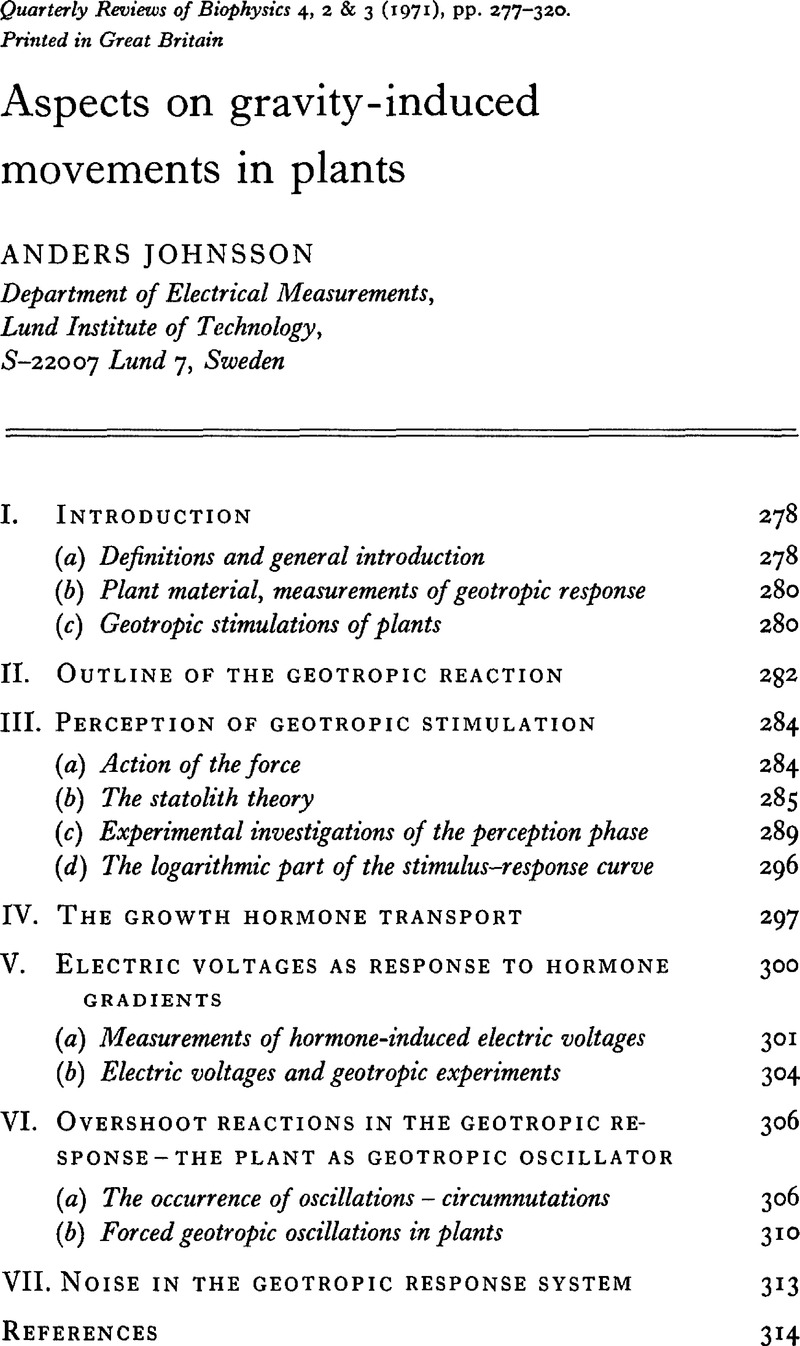Crossref Citations
This article has been cited by the following publications. This list is generated based on data provided by Crossref.
Johnsson, Anders
and
Heathcote, David
1973.
Experimental evidence and models on circumnutations.
Zeitschrift für Pflanzenphysiologie,
Vol. 70,
Issue. 5,
p.
371.
Schönbohm, Ekkehard
1974.
Fortschritte der Botanik.
Vol. 36,
Issue. ,
p.
167.
JOHNSSON, ANDERS
and
PICKARD, BARBARA G.
1979.
The Threshold Stimulus for Geotropism.
Physiologia Plantarum,
Vol. 45,
Issue. 3,
p.
315.
Krikorian, Abraham D.
and
Steward, F.C.
1979.
Life Sciences and Space Research.
p.
271.
Pickard, B. G.
1985.
Hormonal Regulation of Development III.
p.
193.
Pickard, B. G.
1985.
Hormonal Regulation of Development III.
p.
365.
Timell, T. E.
1986.
Compression Wood in Gymnosperms.
p.
1105.
Sack, Fred D.
1991.
Vol. 127,
Issue. ,
p.
193.
Baluška, František
Mancuso, Stefano
and
Van Volkenburgh, Elizabeth
2021.
Barbara G. Pickard - Queen of Plant Electrophysiology.
Plant Signaling & Behavior,
Vol. 16,
Issue. 6,
p.
1911400.
Oliveri, Hadrien
Moulton, Derek E.
Harrington, Heather A.
and
Goriely, Alain
2024.
Active shape control by plants in dynamic environments.
Physical Review E,
Vol. 110,
Issue. 1,



